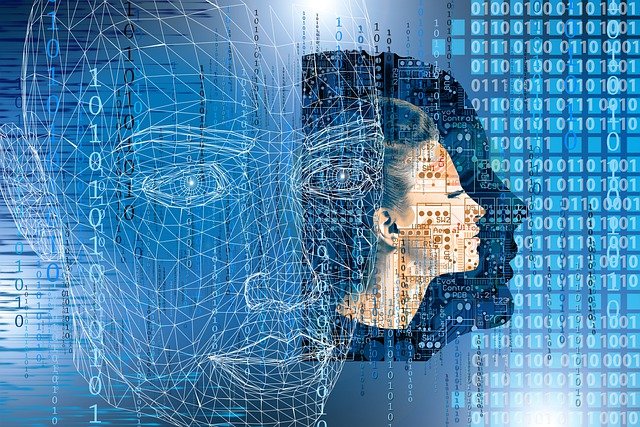Building ‘Good Stuff In, Good Stuff Out’ Artificial Intelligence – Above the LawAbove the Law – Above the Law
Garbage in, garbage out is the cliché that drives most AI conversations. While folks have generally come around to recognizing AI as a valuable tool for limited — though essential — legal tasks, the fear of a GIGO result still haunts the area. Artificial intelligence has made tremendous strides in discovery, brief writing, diligence, and contract management, we’ve also seen retrea…….

Garbage in, garbage out is the cliché that drives most AI conversations. While folks have generally come around to recognizing AI as a valuable tool for limited — though essential — legal tasks, the fear of a GIGO result still haunts the area. Artificial intelligence has made tremendous strides in discovery, brief writing, diligence, and contract management, we’ve also seen retreats in areas where the tool can so easily become your racist robot uncle, like facial recognition.
But the potential AI could bring to justice remains too great to just throw in the towel.
A few weeks ago, I spoke with Neil Sahota, an IBM Master Inventor, United Nations AI subject matter expert, and Lecturer at UC Irvine about building better AI. I’d planned to write this article earlier but — I don’t know if anyone noticed — the Supreme Court decided to take over the legal news cycle for a week or four.
In any event, Sahota told me that one of the biggest areas of interest for the UN (especially UNICRI, the UN’s Interregional Crime and Justice Research Institute) involves developing AI adjudication, which would definitely require some guarantees that good stuff is going in.
Having AI judges is anathema to most of the American audience (But see the last four weeks). If robot lawyers are scary, robot judges register as completely terrifying. Even with the bias inherent in the legal system, the experience with algorithms amplifying bias strikes the American ear as, at best, a lateral move.
However, this speaks to the American privilege of a generally robust respect for the rule of law (But see Dobbs v. Jackson Women’s Health Organization, 597 U. S. ____ (2022)). Sahota explained that many national legal systems are rampantly corrupt with bias appearing in even the most mundane of legal fights. “People here don’t think the system is corrupt — bias sure but people don’t think they’re getting hauled in on a bunch of false charges,” he told me.
A reliable artificial intelligence jurist capable of — dare we say it? — handling the balls and strikes of straightforward cases potentially revolutionizes the rule of law in some areas of the world. Consider Estonia moving traffic court over to AI with an appeals process for outlier cases. Which is another dimension to the international problem: many countries have people waiting years to resolve small matters. Automated systems can dispense with the routine cases easily freeing up human intervention for more complicated matters.
Closer to home, Sahota said that AI can play a better role in jury selection and in evaluating evidence if it’s appropriately trained in psychographics and neurolinguistics. Rooting out unconscious bias on jury questionnaires? It’s not the answer to any specific question — most people aren’t going to come right out and tell you — it’s in the patterns that develop.
“Language is like a fingerprint. Especially The more you talk and you write,” Sahota explained. Beyond sussing out the biases of the jurors, he provided a mind-blowing example of AI breaking down deposition testimony. Taking the AI tool to an already concluded case of Catholic Church abuse, the product crunched hours worth of testimony from a cardinal and immediately keyed in on the fact that he referred to other priests as “friend” or “colleague” except for seven that he consistently identified as “fellows.” The AI said that was suspicious — it turned out those seven were the ultimately guilty priests. That’s the sort of power and insight AI can bring if it’s developed properly.
“The interesting irony here is that people thought there’s no way a machine can assess a human being better than another human being. But AI can study all this [statements, demographics, body language] in real time and provide instantaneous feedback. It doesn’t take much to miss a subtle clue.”
“Tech like any tools can be used in both directions. It’s just about how we choose to use it.” And using it right requires a vigilant evaluation of inherent and unconscious bias and how it can weasel its way into the algorithms, something Sahota identifies as constantly on the minds of the folks he works with.
So don’t give up on AI just because it spits out garbage — redouble your efforts to take out the trash.
Joe Patrice is a senior editor at Above the Law and co-host of Thinking Like A Lawyer. Feel free to email any tips, questions, or comments. Follow him on Twitter if you’re interested in law, politics, and a healthy dose of college sports news. Joe also serves as a Managing Director at RPN Executive Search.
Source: https://abovethelaw.com/2022/07/building-good-stuff-in-good-stuff-out-artificial-intelligence/







